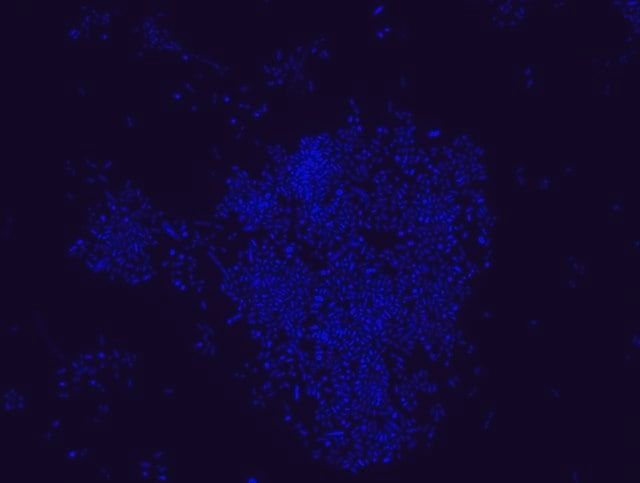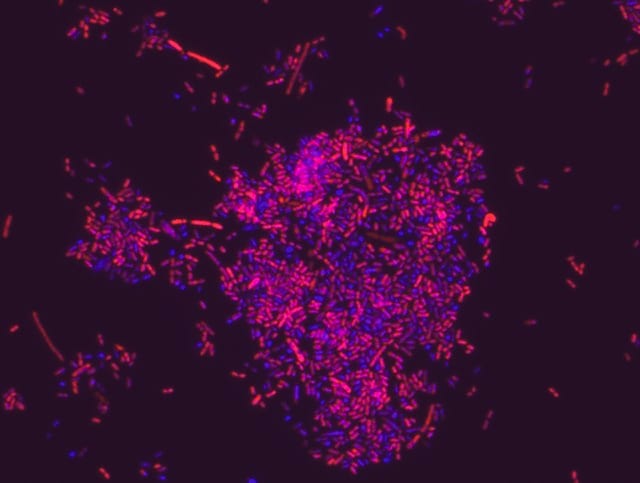您的位置:首页 > 产品中心 > Akkermansia muciniphila FISH probe-Cy3
Akkermansia muciniphila FISH probe-Cy3

| 产品编号: | 4103925 |
| 规格: | Probe for fluorescence in situ hybridization (FISH),20 μM in water |
| 包装规格: | 50 μL |
| 产品类别: | 进口试剂 |
| 品牌: | Sigma-Aldrich |
| 优惠价: | 立即咨询 |
产品性质
| Quality Level【质量水平】 | 200 |
| shelf life【保质期】 | 2 yr |
| fluorescence【荧光】 | λex 550 nm; λem 570 nm (Cy3) |
| shipped in【运输】 | dry ice |
| storage temp.【储存温度】 | −20℃ |
基本信息
| General description【一般描述】 | Fluorescent In Situ Hybridization technique (FISH) is based on the hybridization of fluorescent labeled oligonucleotide probe to a specific complementary DNA or RNA sequence in whole and intact cells.1 Microbial FISH allows the visualization, identification and isolation of bacteria due to recognition of ribosomal RNA also in unculturable samples.2 FISH technique can serve as a powerful tool in the microbiome research field by allowing the observation of native microbial populations in diverse microbiome environments, such as samples from human origin (blood3 and tissue4), microbial ecology (solid biofilms5 and aquatic systems6) and plants7. It is strongly recommended to include positive and negative controls in FISH assays to ensure specific binding of the probe of interest and appropriate protocol conditions. We offer positive (MBD0032/33) and negative control (MBD0034/35) probes, that accompany the specific probe of interest. Akkermansia muciniphila probe specifically recognizes Akkermansia muciniphila cells. Akkermansia muciniphila is a gram negative, oval shaped, non-motile, non-spore forming strictly anaerobic bacteria.8 A.muciniphila inhabits the gastrointestinal tracts of more than 90% of adults and constitutes 1 to 4% of the fecal microbiota.9 It is one of the top 20 most abundant species detectable in the human gut.10 The mucus layer of the human intestine is a niche which is colonized by specific bacteria such as A. muciniphila. A. muciniphila is able to degrade mucin, a key mucus component, using the enzymes sialidase and fucosidase, and utilize it as a source of carbon and nitrogen.11 Consequently, the host produces additional mucus while the bacterium produces oligosaccharides and Short Chain Fatty Acids (SCFAs) that can be utilized by the host and trigger the immune system. An additional protective effect of the SCFA is stimulation of mucus-associated microbiota growth, that serves as a barrier against penetration of pathogens to intestinal cells.9,12 It was found that A.muciniphila abundance in the gut was correlated to a healthy intestine and inversely correlated to many disease conditions.11 In comparison to healthy controls, A.muciniphila levels were low in patients with intestinal disorders, such as inflammatory bowel disease (IBD), but also in other conditions, such as autism, atopy, and obesity.11,13-16 Therefore, the level of A.muciniphila was suggested to serve as a biomarker for healthy intestine.17 A. muciniphila is a promising potential probiotic that can be administrated for the treatment of diseases such as, colitis, metabolic syndromes, immune diseases and cancer.10 FISH technique was successfully used to identify A.muciniphila with the probe in various samples such as pure culture (as described in the figure legends and18), fecal samples 19-21, gut lumen content 22, appendix samples 23, cecum content and tissue24,25 and colon tissue26. The probe can also be used for FISH coupled with flow cytometry (FCM-FISH)19,20,21 and FISH combined with Raman microspectroscopy 24. |
| Application【应用】 | Probe for fluorescence in situ hybridization (FISH),recognizes Akkermansia muciniphila cells |
| Features and Benefits【特点和优势】 |
|






